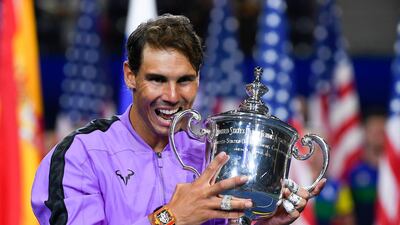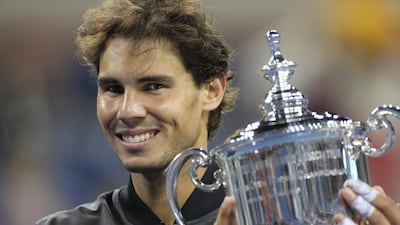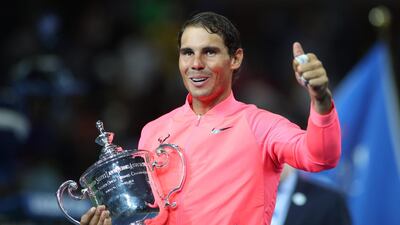The US Open has already been hit by a spate of withdrawals with more players expected to pull out before the August 31 kick-off.
On the men's side, three of the world's top 10 – last year's winner Rafael Nadal (2), Roger Federer (4) and Gael Monfils (9) – and seven of the world's top 50 are out of the tournament, which will be the first Grand Slam since the 1999 US Open to not feature either Nadal or Federer.
On the women's side, three of the world's top seven – world No 1 Ashleigh Barty, No 5 Elina Svitolina and seventh-ranked Kiki Bertens – and nine of the world's top 40, have confirmed they will be missing the action in New York.
World No 2 and reigning Wimbledon champion Simona Halep is on the fence and will make a final decision on the matter following her participation in this week’s Prague Open.
Asked what her main concerns are, the Romanian said on Sunday: “Everything.
“Also the travelling from Europe is a little bit tough, changing flights, we don’t have direct flights, so it’s going to be tough for me personally, mentally, so I don’t want to put myself into that stress. I haven’t decided yet. But the conditions are tough for me in this moment.”
While many players share Halep’s concerns and are worried about the high number of Covid-19 cases in the US, others have taken the leap and are already in the States, either competing in a stacked Lexington draw this week, or preparing for the relocated Cincinnati event and the US Open.
The world these days typically has two modes – one that vehemently condemns and another that exaggeratingly applauds and celebrates. Often there is nothing in between.
So imagine the confusion the tennis community is currently facing when two opposing decisions can both be seen as valid and acceptable options.
One cannot fault those who are anxious about flying to the US during such difficult times and are choosing to prioritise their health, and peace of mind, over contesting a couple of tournaments mid-pandemic. It's also completely understandable that some players feel comfortable enough to travel and compete following a five-month hiatus.
Britain's No 1 Johanna Konta said it best. "I think it's really important to not judge anyone's level of anxiety on this, whether it's high or low, either way I think it's very difficult to pass judgment on people and how they're dealing with this situation because everyone is going to deal with it very differently," the world No 14 told reporters in Lexington, Kentucky.
People may not be judging players for opting in or out of the US Open but they’re certainly judging the event as a whole, attaching an asterisk to this Grand Slam, as well as to its eventual champions, based solely on the assumption that the high-profile withdrawals will result in a weaker field, and therefore, an easier path to the title.
Considering the men’s ‘Big Three’ have won the last 13 consecutive majors, and 52 of the last 60, some believe the absence of two of them in New York would somehow diminish the accomplishment of the man who ends up lifting the trophy.
Winning a Slam in this era usually requires defeating at least two of Djokovic, Nadal or Federer in the latter stages of the tournament, in best-of-five duels – a feat rarely achieved over the past 15 years.
It’s worth noting though, that the US Open has crowned six winners in its past 11 editions; so perhaps witnessing a new champion at Arthur Ashe Stadium next month shouldn’t come as a huge surprise.
For the women, competition has been incredibly fierce at the majors and Serena Williams will once again have her eye on a record-equalling 24th Grand Slam. The American, who turns 39 next month, has lost all four major finals she has reached since returning from maternity leave in 2018 and this US Open represents a golden opportunity for her to finally end that streak.
What many people are overlooking is how difficult this US Open is going to be for everyone involved, irrespective of who is in or who is out.
The 2020 US Open will have an asterisk next to it, but not because it was easier to win or it had a high number of absentees. It’s going to have one because it is being staged against all odds in the middle of a global pandemic. It’s going to have one because its players will have to go through rigorous Covid-19 testing and they’ll have to stay isolated in their hotel rooms when not onsite for an extended period of time (at least three weeks in a row for many of them). They will have a limited number of staff members with them at the tournament and will be competing in front of empty stands, with no fans to draw energy from.
They’re going to be playing a Grand Slam after a five-month break, looking to win seven matches in 14 days without injuring their bodies that are lacking match fitness. They’ll be doing all this with the threat of the virus hanging over their head every day and threatening their eligibility to compete.
"I don't think it's [the withdrawals are] going to make it any easier, you still have to win seven matches to play, you're still going to be in the bubble with maybe food you don't like, in the hotel room, most of the time you're going to be very isolated," said 2017 US Open champion Sloane Stephens.
“All of those things apply to every single player, so I think it’ll be interesting to see how it all plays out at the end but regardless, it’s still seven matches to win and whoever is the last man standing is who it is.”

While the extensive list of rules and protocols revealed by the US Tennis Association last week is essential to maintain the security of the bubble, it’s also intimidating and tough to digest.
“To be honest, when we had the call with all the rules and the restrictions coming in, it made me a little bit discouraged coming because it felt a little bit more – it’s good for your protection but at the same time it felt a little bit like, you know what? I’m not sure if I actually want to go,” said former world No 1 Victoria Azarenka.
Other players have their own personal concerns added to the mix. Serena Williams has a history of blood clots and has suffered multiple pulmonary embolisms in the past.
"I don't have full lung capacity so I'm not sure what would happen to me. I'm sure I'll be OK but I don't want to find out kind of thing. I have like 50 masks that I travel with, I never want to be without one," she said.
“I’m super, super careful with what I’ve been doing and everyone in the Serena bubble is really protected because at the end of the day, yeah it’s cool to play tennis but this is my life and this is my health. I’ve been a little neurotic to an extent but that’s just what I have to be right now.”
Nothing is easy for anyone right now, and tennis is no different. It’s tough for organisers trying to run the event, for players hoping to compete in it, and even the journalists attempting to cover it. The asterisk is there, but not for the reasons you think.










